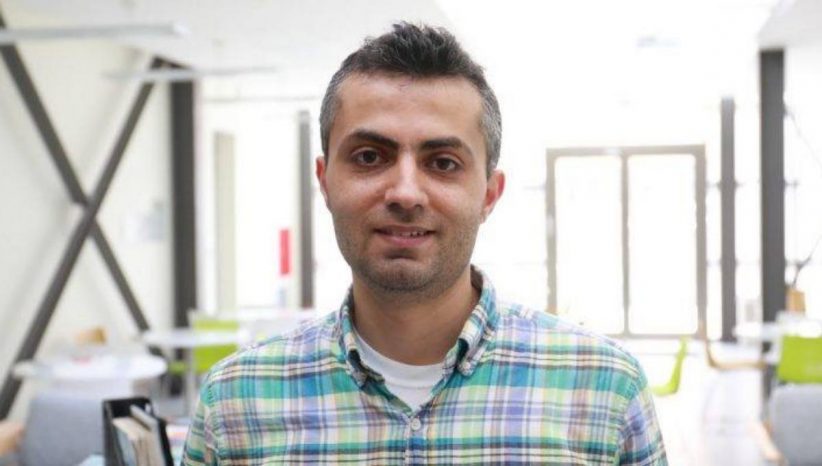What exactly does the public need to know about the coronavirus? What are the consequences of pandemics on a society? Is Armenia prepared? To answer these questions, Civilnet’s Emilio Luciano Cricchio spoke to Vahe Khachadourian, Assistant Professor of Epidemiology and Biostatistics at the American University of Armenia’s Turpanjian School of Public Health.
Emilio Luciano Cricchio: What is your opinion about the preventative measures Armenian authorities are taking against the spread of COVID-19?
Vahe Khachadourian: Before commenting on the preventive measures taken by the Armenian authorities, I would like to refer to a recently developed index, the Global Health Security Index, which offers comprehensive assessments and benchmarking of health security and related capabilities across 195 countries. The assessment focused on 6 main domains, namely prevention, detection and reporting, rapid response, health systems, compliance with international norms, and risk environment. Overall, Armenia ranks 44th, similar to Turkey (40th), and Georgia (42nd), and well ahead of Russia (63rd), Iran (97th), and Azerbaijan (117th). Similar rankings are based on a rigorous methodology and evidence, hence, set certain expectations. In short, Armenian authorities are living up to those expectations and have been doing a very good job with their response to COVID-19. Free testing and treatment offered by the Armenian health care system, continuous monitoring of high-risk individuals (e.g. travelers), contact tracing, contact management, isolation and quarantine, testing of suspected cases, and promotion of social distancing have been among key measures that Armenia has taken, following the existing best practices.
As of March 17, more than 160 countries have confirmed cases of COVID-19. It is crucial not to forget that this is not a sprint, this is going to be more like a marathon. One of the major goals in managing this pandemic for every country is to keep the number of cases, at the peak of the epidemic, below the country’s health system capacity. This has crucial implications in minimizing COVID-19 related mortality. The interventions and implemented strategies so far have been well justified and effective in achieving this goal. Of course, if the number of cases rise, I assume Armenia would also adopt its response accordingly. For instance, management and isolation of mild cases could be carried out at non-hospital settings or patients’ residence. Needless to say, this will require a high level of self-discipline and a great sense of responsibility.
ELC: You mentioned mortality. Are there various mortality estimates? How reliable are those estimates?
VK: While mortality estimates are theoretically straight forward to calculate, in practice, calculations are not without methodological challenges.
The main challenge for this estimation is to obtain an accurate number for all those individuals who are infected with COVID-19. Often the mild cases remain undiagnosed and are not counted in the denominator for the mortality estimates. Therefore, it is safe to say that the estimates that we come across from different countries could overestimate the mortality rates, or at their best provide an upper bound for COVID-19 mortality rates.
One of the studies that was conducted in a well-defined population suggests significantly lower rates. The Diamond Princess cruise ship which included a total of 3,711 crew and passengers resulted in 619 confirmed cases of COVID-19. Of the total number of cases, 318 were asymptomatic at the time of diagnosis. The mortality rate among the confirmed cases yielded a mortality rate of 0.6%, much lower than the estimates among other populations. The high rates from China and other countries could partly be attributable to undiagnosed mild cases. It is too soon to make an accurate estimate about mortality, but the best estimates suggest that actual rates are most likely between 0.2% and 1.5%.
I want to highlight that mortality rates are also a function of several other factors, including age distribution of cases, prevalence of comorbid health conditions, as well as the preparedness of the health system to respond. Countries with poor health systems and those with concurrent cases above their health systems capacity can experience higher mortality rates.
ELC: Have the Armenian authorities handled this epidemic appropriately, what are some measures you would suggest that aren’t being taken?
VK: I think the Armenian authorities’ response has been evidence based, timely, and adequate. I was nicely surprised to see that the recent World Health Organization (WHO) guidelines and protocols for COVID-19 were translated and adopted to the Armenian context, as early as January. The awareness raising actions and operating with full transparency have been vital steps in inspiring confidence among citizens.
Community engagement is key in the success of public health interventions. The Armenian authorities are doing their part, but I cannot overemphasize the importance of social solidarity, community engagement, and individual responsibility in shaping the effectiveness of the response to COVID-19 in Armenia. I see an opportunity for various political parties, educational institutions and professional groups to be more collaborative in these difficult times, to support the response while sharing their knowledge, experience, and expertise. Following social distancing by citizens can be one of the most effective measures in flattening the curve of the epidemy and saving lives.
Public health challenges require a united response. Diseases, especially infectious ones do not discriminate by political affiliation and ideology. Whether from ruling or opposition parties, efforts should be united to overcome the current health challenge while mitigating the social and economic adversities.
















